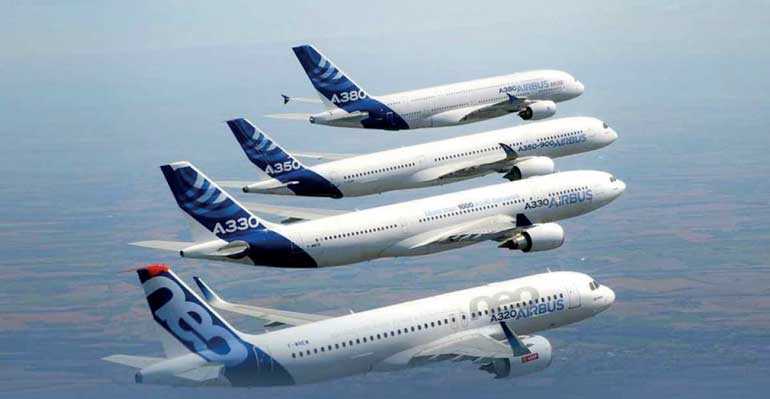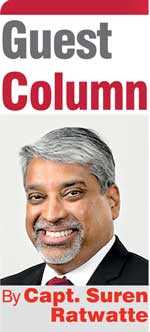Saturday Dec 13, 2025
Saturday Dec 13, 2025
Monday, 17 June 2019 00:00 - - {{hitsCtrl.values.hits}}

Airbus celebrated its 50th birthdayon 29 May this year. Launchedin 1969 at the Paris Airshow by the French and West German governments, the new conglomeratewas meant to be a foil to domination of the western civilian airline market by the Americans.(The 2019 Paris Airshow takes place on 17 June, an appropriate time to look back on what the upstart ‘planebuilderhas accomplished.)

At the time, Boeing, McDonnell Douglas and Lockheed, all based in the USA, had an 80% share of the airliner market. Despite several innovative designs, including the Aérospatiale/BAC Concorde, European manufacturers were never able to gain a significant share of their own market, let alone of the huge one across the Atlantic.
The Boeing 707 and Douglas DC-8 had proved to be winners in the earlyjet airliner stakes. Britain’s de Havilland Comet had suffered a series of disastrous crashes and could never regain market share despite being the first jet transport aircraft in line service. Newer models by Boeing (727 and 737) and the Douglas (later McDonnell Douglas) DC-9 were also dominating the short-range space, displacing European typessuch as the Sud Aviation Caravelle, Hawker Siddeley HS 121 Trident and BAC One-Eleven.
Making matters worse, a new generation of gigantic airplanes (to be dubbed ‘wide bodies’)– Boeing 747, Lockheed L-1011 TriStar and McDonnell Douglas DC-10 – were in development and about to enter airline service.
Consolidate or perish
Convinced that only a consolidation of their nationalaviation industries could stop a seemingly inevitable US-dominated future, the European governments decided to act.A ray of hope had been the Anglo-French Concorde, a supersonic airliner that showcased Europe’s technological mastery, but was not selling well.
Having got the British to commit on building the wings for the new machines, Airbus Industrie GIE,a joint company owned by the French and German governments, was formed. Its first model, dubbed the Airbus A300,wasa medium-range,twin-engine,wide-body airliner designed to carry 300 passengers on the main European trunk routes.
Initial steps
The A300 was difficultto sell. Despite being launched by Air France in 1970 and garnering some orders in other parts of the world, it was largely shut out of the US market,then,as now, the world’s biggest. The DC-10 was aclear winner in the domestic market, although its reputation was sullied by several catastrophic accidents. The Lockheed TriStar was very much insecond place,whileBoeing was ignoring the wide-body market for anything smaller than their flagship 747.
Determined to break into the US market, for which the A300 was ideal, Airbus took the risky step of offering four ‘free’ aircraft to Eastern Air Lines (at the time the dominant carrier on the east coast of the USA) for a six-month trial.
This risky step (unthinkable in today’s market environment) paid off when it was proved that the aircraft filled a gap in the market and Eastern ordered 23 more at the end of the trialperiod in 1978. Today hundreds of Airbus airliners ply USskies on a daily basis.
Further innovation
Listening to its customers, Airbus tweaked the A300 further by reducing the crew complement to two pilots (doing away with the Flight Engineer) by computerising many of the systems and checklists. A shorter model with longer rangewas introduced in 1978to fill a niche market.Carrying 200 passengers and large quantitiesof freight on sectors ofeight hours, the new A310 proved viable on ‘long-thin’ routes. The real breakthrough,however, came in 1981 when Airbus announced the launch of the A320, the first all-digital ‘fly-by-wire’ aircraft for commercial service. Doing away with mechanical cablesand pulleys linking pilots’ control devices to the flight control surfaces, the A320 was a revolutionary aircraft in many respects.
Air France was the first customer,placing an order in 1981, following which the type went on to becomea tremendous success with more than 14,000 examples representing several variantssold since then.
The fly-by-wire family
The A320 set a new standard for efficiency and reliability, despite some initial fatal accidents. The digital innovation it launched proved very popular with the airlines,and Airbus continued to develop a family of similar aircraft.
A longer version, the A321, was launched in 1989, and soon became a great success. Smaller versions, the A318 andA319, were also developed to complement the fleet ‘family’by offering a variety of uplift capacities suitable to differing conditions. The A330 and A340,intended as medium- and long-range successors to the A300/310 family, incorporated the now-familiar fly-by-wire technology of the A320 and its derivatives. The A340 in particular, with the longest range of its time and capable of flying to anywhere on the planet thanks to its four fuel-efficient engines, was seen as the flagship of the Airbus stable. The A330, with only two engines, was not regardedat the time as anything more than a ‘gap filler’.
Most interestingly, Airbus pioneered the concept of cockpit ‘commonality’ whereby all their aircraft looked and felt similar to the pilots flying them. Coupled with largely complementary systems and procedures, this enables the airlines to reduce pilot training requirements and have common ‘type-ratings’ enablingpilots tofly a largerorsmaller version of the same airliner on subsequent flights.
This proved to be a popular innovation with airline owners and managers, if not the pilots who actually flew the aircraft. Over time though, the concepthas proved its worth and is now an accepted industry standard.
The super salesman
With a stable of aircraft and proven delivery process, Airbus then took another gamble. An American, John Leahy, thena salesperson for Piper Aircraft (a light aircraft manufacturer in the USA) was lured away in 1985 to become the head of North American sales for Airbus. This proved to be a stroke of genius. With a typically ‘over the top’ American sales persona, John (as he always insisted he be called) would herald an era of stunning successes for his company. He was Global Head of Sales by 1994, and by the time he retired in 2018, had sold an estimated one trillion USD worth of aircraft for his employer.
Leading innovative and sometimes risky sales strategies, John was able to lure away many of Boeing’s long-term customer airlines, and was the main force behind Airbus’s success today. He long held the goal of making Airbus the equal of Boeing, and settling for no less than a similar, if not larger, share of the global marketplace. It is to Leahy’s credit that he achieved his goal, and more, during his long tenure with Airbus.
Number one in the world
So as Airbus SE (as it has beenknown since 2014) celebrates its 50th birthday, the company can be proud of what it has achieved.
Rising from the ashes of Europe’s beleaguered and loss-making aerospace sector, the Group has three divisions:Commercial Aircraft; Defence and Space; and Helicopters. Airbus designs, manufactures and sells its products, ranging from the gigantic A380 airliner to rotary-wing aircraft from the world’s largest helicopter manufacturing business, all over the world. Most importantly Airbus is profitable, reporting a net profit of 3.1 billion Euros last year. Given the trials and tribulations that Boeing is facing at the moment, it is more than likely that Airbus will finish 2019 as the largest and most profitable aerospace business in the world.
Certainly an achievement worth celebrating.